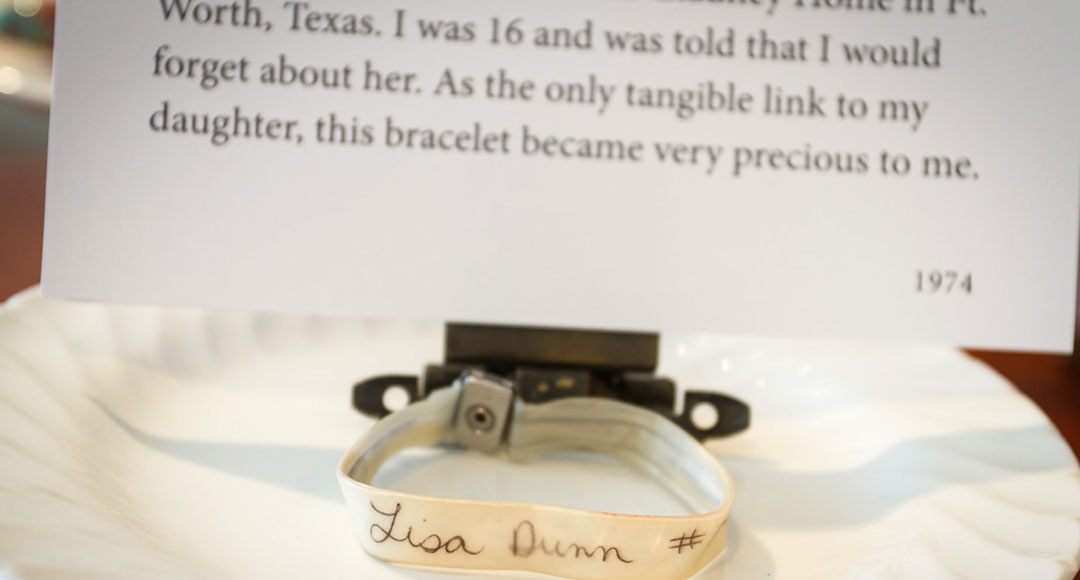The Story Behind the First Adoption Museum in the U.S.

Over 1,500 children were transferred to the Presidio, a former army base in San Francisco, before being placed with families during Operation babylift. This image depicts a baby being tended to at Harmon Hall in the Presidio, San Francisco. (Photo: National Park Service, Golden Gate National Recreation Area)
In the early days of April 1975, just weeks before the Fall of Saigon and the end of the Vietnam War, a campaign was launched to evacuate thousands of children from Vietnam and place them with families in the United States and its allies. War had devastated the country, tearing families asunder. But “Operation Babylift” was controversial; not all of the children adopted were orphans. And spotty record keeping has made it difficult or impossible for many adoptees to locate their Vietnamese families.
Operation Babylift has been memorialized in museums and examined from many angles, but until now, no museum existed to document if from perhaps its most personally affecting and lasting legacy: adoption. Now, thanks to the efforts of one Bay Area women, the U.S. has its first adoption museum.
 Beds line Harmon Hall, which was transformed into a makeshift nursery. (Photo: National Park Service, Golden Gate National Recreation Area)
Beds line Harmon Hall, which was transformed into a makeshift nursery. (Photo: National Park Service, Golden Gate National Recreation Area)
The project began in 2011 after Laura Callen had just had her second child and was feeling reflective. She wondered, “What’s next?” And her thoughts turned to adoption.
Callen is adopted, and while she knew she was an adoptee, it wasn’t something that was openly discussed in her family.
And that’s when she first began to plot an adoption museum.
While there are archives and history projects that document parts of adoption, Callen saw a need for an organization dedicated entirely to collecting an experience historically shrouded in secrecy, stigma and shame.
A marketing and communications professional, the Berkeley-based Callen spent the next year and a half refining the concept and bouncing the idea off adoption professionals, entrepreneurs and museum experts. In 2013 she founded the Museum Adoption Project, began fundraising, and pulled together a leadership team whose credentials include the Guggenheim and J. Paul Getty Museum.
“People really don’t know how to talk about adoption,” says Callen.
 A birth mother’s hospital bracelet bares a false name. The objects were displayed around a table. (Photo Indira Urrutia and Marc Hors. Courtesy the Adoption Museum Project.)
A birth mother’s hospital bracelet bares a false name. The objects were displayed around a table. (Photo Indira Urrutia and Marc Hors. Courtesy the Adoption Museum Project.)
Callen says a key element of the museum’s mission is social change, and that the museum will address difficult issues such as coerced adoption and the roles race and money play in the adoption system.
“We as human beings created this practice of adoption, and the way it’s practiced in the United States is a particular kind of practice,” says Callen. “We decided how that was going to work, we created the laws and policy and I think we have a responsibility to understand it so we can look at it and say, ‘This part of it really works and this part over here is really a problem, let’s fix it.’”
The Adoption Museum does not have a physical presence yet. And while Callen says it is important to have one at some point, right now the project is taking advantage of the shifting definition of what a museum is and producing pop-up events. A dream project would encompass a diverse offering including archives, historical and personal artifacts, performance and partnerships.
 Many of the 18 objects, which included a birth mother’s journal for her daughter, could be touched. (Photo: Indira Urrutia and Marc Hors. Courtesy the Adoption Museum Project.)
Many of the 18 objects, which included a birth mother’s journal for her daughter, could be touched. (Photo: Indira Urrutia and Marc Hors. Courtesy the Adoption Museum Project.)
In 2013 the museum put on an event called “Our Place At the Table: Honoring Birth Mother Stories”. Eighteen women whose children had been adopted shared their stories through personal artifacts, such as a journal and a hospital bracelet. A one-night event, about 180 people visited the exhibit in three hours. Next, the museum partnered with the Presidio Trust, a San Francisco-based federal agency, to co-curate an exhibit on Operation Babylift. The exhibit, which opened in April and runs through December, includes artifacts, photographs, oral histories and a roster of speakers. The museum’s on-going multimedia efforts include mapping adoption and a children’s book project.
“I think there’s a way that adoption seems to sit below our consciousness,” says Callen.”But in fact it really is quite a pervasive experience.”



Follow us on Twitter to get the latest on the world's hidden wonders.
Like us on Facebook to get the latest on the world's hidden wonders.
Follow us on Twitter Like us on Facebook